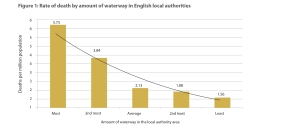Search and rescue helicopter contract signed
The Department for Transport (DfT) announced this week (wb 25/03) that it has signed a contract with Bristow Helicopters Ltd to provide search and rescue helicopter services in the UK. In his written statement to the House Transport Secretary, Patrick McLoughlin MP said that the new £1.6 billion contract for search and rescue helicopter services will see the UK benefit from improved flying times and better coverage of high-risk areas.
Helicopters will be able to reach a larger area of the UK search and rescue region within one hour of take-off than is currently possible, and based on historic incident data it is estimated that there will be an overall improvement in flying times to incidents of around 20% (from 23 to 19 minutes).
Presently, approximately 70% of high and very high risk areas within the UK search and rescue region are reachable by helicopter within 30 minutes. Under the new contract, approximately 85% of the same area would be reached within this timeframe.
The full statement from DFT can be found here.
Via RYA news.
Corporate manslaughter charge over death of 11-year-old girl
A watersports club in Middlesex has been charged with corporate manslaughter in relation to an incident in which an 11-year-old girl died after falling from a banana boat ride. Prince’s Sporting Club in Bedfont, Middlesex, has also been charged with an offence under section 3 of the Health and Safety at Work Act 1974. Section 3 requires all employers to conduct their business in a way that ensures, so far as is reasonably practicable, that others are not exposed to risk.
Mari-Simon Cronje died during a birthday celebration at the club on September 11, 2010, after falling from the banana boat and being struck by the boat that had been towing it. Elizabeth Joslin, specialist prosecutor in the Special Crime Division of the Crown Prosecution Service said: “I have carefully reviewed all of the evidence gathered by the Metropolitan Police and the Hounslow Environmental Health Department during their investigation into the tragic death of Mari-Simon Cronje. “I have concluded that there is sufficient evidence to charge the Prince’s Sporting Club Ltd with both corporate manslaughter and an offence under section 3 of the Health and Safety at Work Act 1974.”
A director of the Prince’s Sporting Club Ltd has been charged under section 37 of the Health and Safety at Work Act. An initial hearing took place at Westminster Magistrates’ Court on February 19. The case has been referred to Southwark Crown Court for a plea and case management hearing on April 26. Via RoSPA journals
Merlin Attractions loses appeal following fall death conviction
Merlin Attractions Operations — a subsidiary of Madame Tussaud’s — was convicted of two healthy and safety offences in April this year following a seven-day trial, and was fined £350,000 plus £145,000 in costs.
The case followed the death of George Townley in December 2007, who suffered fatal head injuries after falling 14 feet from the castle’s Bear and Clarence Bridge.
Via HSW.
2011 WAID water related fatalities report released
Drowning and immersion deaths from accidents or natural causes across the UK in 2011 remained static with over 400 deaths.
The report from the National Water Safety Forum (NWSF) identified 407 water-related fatalities throughout 2011 with the majority – 219 (54 per cent) – taking place in inland waters including rivers, canals, lakes, streams, lochs, ponds and reservoirs. Data from the NWSF’s Water Incident Database (WAID) also shows that just over a quarter of deaths – 105 (26%) – happened at the coast or harbour, such as at beaches, marinas or docks.
You can read the blog, and access the report in full here.


You must be logged in to post a comment.